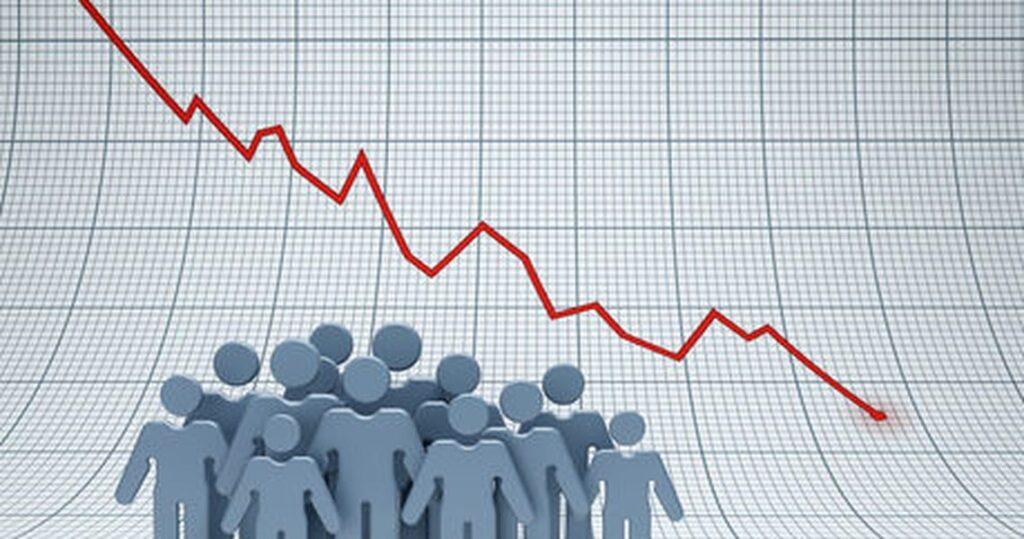
U.S. births are in free fall, and not just because of COVID-19. The U.S. total fertility rate, a measure of the average number of lifetime births each woman can be expected to have, began falling in the wake of the Great Recession.
A seismic demographic shift is underway. Until recently, America was demographically exceptional. Our relatively high fertility rate, together with substantial immigration, seemed to ensure that, despite all those aging Boomers, we would remain one of the youngest developed countries. It also seemed to ensure that we would still have a growing workforce and economy, even as those in Europe and Japan stagnated or contracted. In barely more than a decade, this advantage has evaporated.
By 2019, the fertility rate had dropped to an all-time low of 1.71, down from 2.12 a decade before. Now, the pandemic has driven it even lower — to 1.64 in 2020, according to the CDC. And it will almost certainly fall further this year, perhaps all the way to 1.5, which would be less than the recent average in Europe.
Unless birthrates rise again, the U.S. will age much more than the latest Census projections suggest. This means that government spending, especially for Social Security and Medicare, will be higher than is currently projected. It also means that economic growth will be slower than is currently projected. These developments threaten to undermine future living standards and may even put America’s geopolitical stature at risk. The ability to project power, after all, depends in part on demographic and economic size. China’s leadership understands this, which is why it is in a panic about the country’s plunging fertility rate and imminent population decline.
The long-term impact of declining birthrates will also be felt at the state and local level, and will be greatest in states like New York that are already losing population. Large urban areas, including suburban and regional hubs like Nassau and Suffolk counties, will be heavily affected. Already challenging issues like underfunded pensions, cutbacks in public services and shortages of skilled workers could all get worse.
Growing up on Long Island, I remember the widespread disruption in local school districts as classrooms overflowed during the 1960s and ’70s, then emptied out as the postwar baby boom faded. More disruption like that now lies ahead.
The most important reason for America’s deepening baby bust is that it has become much more difficult for millennials to launch careers and establish independent households than it was for Boomers or Gen-Xers at the same age. Policies like subsidized day care and paid parental leave that mitigate the costs of child rearing and help young adults to balance job and family responsibilities could therefore help.
Unless birthrates rise again, the U.S. will age much more than the latest Census projections suggest. This means that government spending, especially for Social Security and Medicare, will be higher than is currently projected. It also means that economic growth will be slower than is currently projected. These developments threaten to undermine future living standards and may even put America’s geopolitical stature at risk. The ability to project power, after all, depends in part on demographic and economic size. China’s leadership understands this, which is why it is in a panic about the country’s plunging fertility rate and imminent population decline.
The long-term impact of declining birthrates will also be felt at the state and local level, and will be greatest in states like New York that are already losing population. Large urban areas, including suburban and regional hubs like Nassau and Suffolk counties, will be heavily affected. Already challenging issues like underfunded pensions, cutbacks in public services and shortages of skilled workers could all get worse.
Growing up on Long Island, I remember the widespread disruption in local school districts as classrooms overflowed during the 1960s and ’70s, then emptied out as the postwar baby boom faded. More disruption like that now lies ahead.
The most important reason for America’s deepening baby bust is that it has become much more difficult for millennials to launch careers and establish independent households than it was for Boomers or Gen-Xers at the same age. Policies like subsidized day care and paid parental leave that mitigate the costs of child rearing and help young adults to balance job and family responsibilities could therefore help.



More Stories
Today’s News: March 26, 2024
The Greatest Purveyor of Violence In The World
Video: Fred Dashevsky – The CPI Fallacy